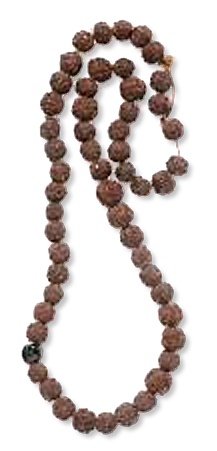Since its publication in 1987, The History of Beads has become the world's definitive guide for bead lovers, collectors, and scholars. In this new edition, author Lois Sherr Dubin updates al chapters with the latest archeological discoveries; pens a new chapter on contemporary adornment since the 1980s, with a focus on glass beads; and best of all, revises and adds 225 beads to what is considered by many to be the piece de resistance: the eight-page gatefold timeline that guides readers through the remarkably rich history of the world's first form of adornment. The latest revisions include an update on the oldest bead ever discovered, now dating to around 100,000 B.C., and an explanation on why beads worn on the human body were the original media communication system.
Beads are among the most stunningly attractive and varied items of jewelry known to humankind. Yet they represent far more than mere personal adornment. Beads have been used throughout the world in countless ways: as talismans in prehistoric and contemporary societies; as status symbols in the ancient world and in present-day Africa; as religious articles in the Buddhist, Christian, and Islamic faiths; and as a standard medium of barter throughout the world. They represent basic relationships to life and the supernatural and have been used to organize and symbolize cultural world views. They have been guideposts in human relationships and expressions of innermost feelings. Each bead is therefore a capsule of cultural information, containing a fascinating tale of the origins of its materials, its manufacture, its multifold uses, perhaps its travels, and certainly its potent symbolism.
Lois Sherr Dubin presents the panoramic scope of these ubiquitous objects, unravels the mysteries of the world's rarest beads, and explores the myriad cultural context from which beads have come. Along the way, she examines the dominant historical, geographic, and thematic features of beads, as well as their impact on cultural cross-fertilization and the light they shed on the ritualistic practices of various peoples.
Updates include the numerous maps, which have been modernized and are now in color; approximately seventy formerly black-and-white images have been changed to full color; and 200 new photographs have been taken especially for this edition. Beautifully packaged with a new cover, this revised and expanded edition of The History of Beads is a must-have for devotees of the first edition and for the next generation of bead obsessives and aficionados.




